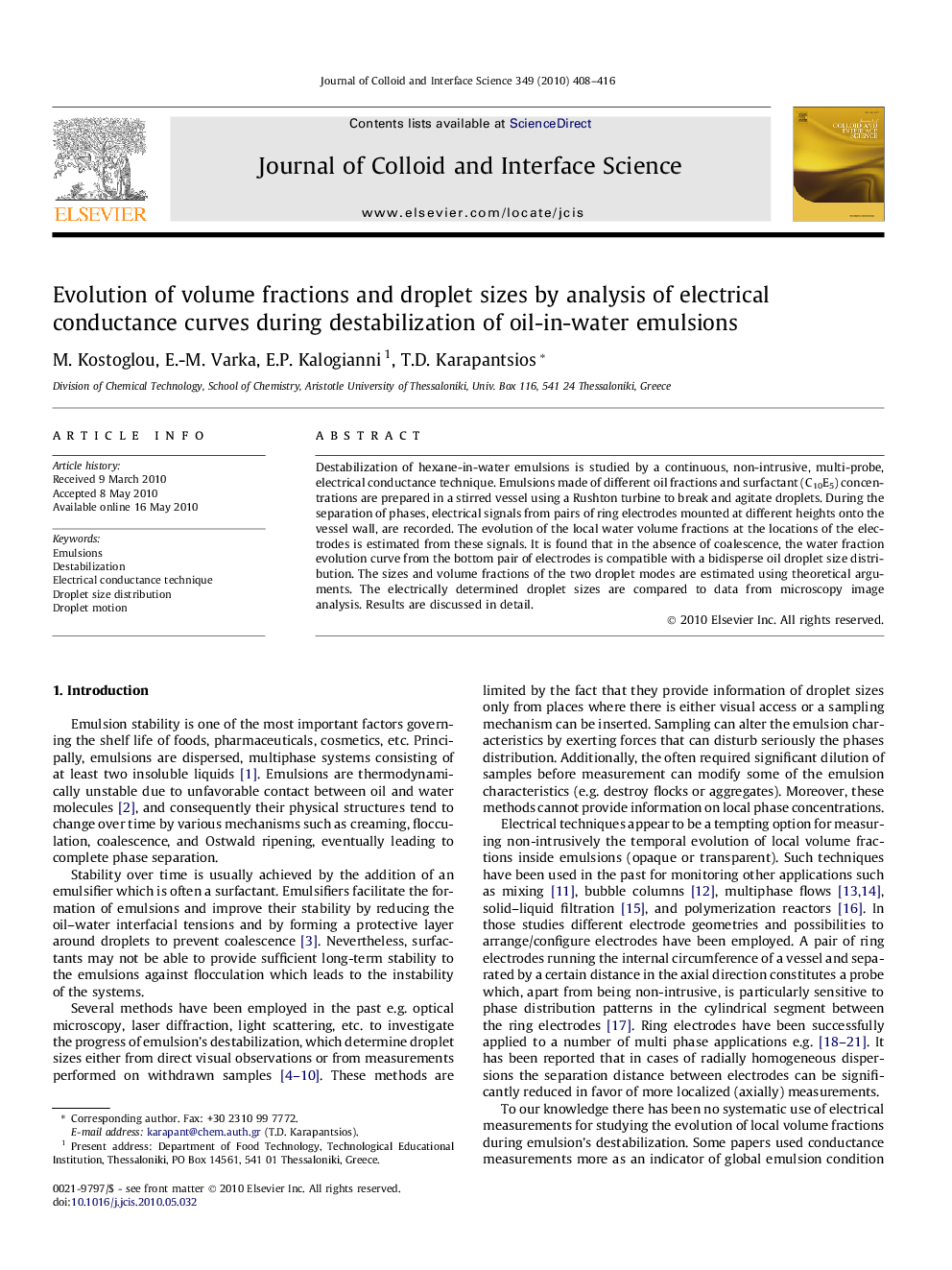| Article ID | Journal | Published Year | Pages | File Type |
|---|---|---|---|---|
| 609624 | Journal of Colloid and Interface Science | 2010 | 9 Pages |
Destabilization of hexane-in-water emulsions is studied by a continuous, non-intrusive, multi-probe, electrical conductance technique. Emulsions made of different oil fractions and surfactant (C10E5) concentrations are prepared in a stirred vessel using a Rushton turbine to break and agitate droplets. During the separation of phases, electrical signals from pairs of ring electrodes mounted at different heights onto the vessel wall, are recorded. The evolution of the local water volume fractions at the locations of the electrodes is estimated from these signals. It is found that in the absence of coalescence, the water fraction evolution curve from the bottom pair of electrodes is compatible with a bidisperse oil droplet size distribution. The sizes and volume fractions of the two droplet modes are estimated using theoretical arguments. The electrically determined droplet sizes are compared to data from microscopy image analysis. Results are discussed in detail.
Graphical abstractA continuous non-intrusive electrical conductance technique delivers local volume fractions and droplet sizes during emulsion destabilization. The electrically determined droplet sizes are compared to microscopy data.Figure optionsDownload full-size imageDownload high-quality image (61 K)Download as PowerPoint slide
